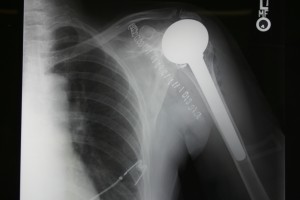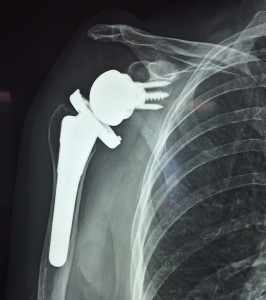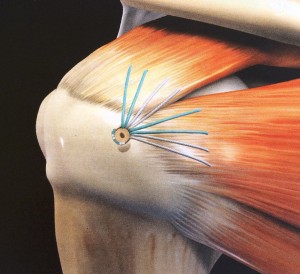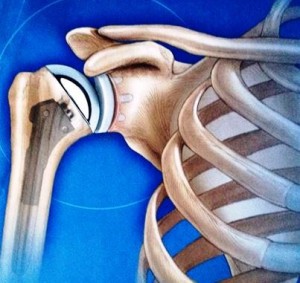Shoulder replacement surgery is becoming much more popular. That is because the results have been much better than in years past. Since there are fewer arthritic shoulders than arthritic knees and hips, less are done.

Also the fact that we do not walk on our hands, allows us to tolerate shoulder arthritis much better than hip and knee arthritis. The heavy weight bearing on our legs, magnifies the pain we feel in our worn out hip and knee joints. Shoulder pain is usually very annoying, and can interfere with sleep and sports activities.. but some people can live with it if they choose to modify their activities. More and more, the right decision is NOT to live in pain. Our total shoulder patients have a 95 percent success rate. The small percentage with persistent pain can usually be helped with a second surgery. A few patients will re-tear their rotator cuffs because they feel so good after surgery that they overuse their arms too soon before full healing. Some patients who do not push their own rehab and physical therapy can end up with stiffness in the joint – they may face a manipulation after surgery to regain motion. Sometimes smaller procedures are done to help, for example to remove an arthritic AC joint, or to release a degenerated biceps tendon.

In the past, we only had the traditional shoulder replacement device to use on arthritic shoulders. This device depends on a well functioning rotator cuff (see picture) to keep the joint centered and to allow us to lift the arm overhead. Now with the invention of the “reverse” total shoulder replacement implant, we can replace shoulders that have massive cuff tears, and the patient can still lift the arm by using a “trick” of biomechanics.

By moving the center of rotation of the shoulder joint lower and more towards the center of the body, the large superficial deltoid muscle now comes into play as an elevator of the arm. Many patients feel stronger after the reverse surgery than they have in years!

An Xray and an MRI will allow Dr. Kozinn to determine which implant is best for YOUR shoulder. The revovery is easier than for a total knee, but maybe a bit more inconvenient than our anterior hip recovery. The arm will rest in a sling until the pain is minimal, than you may progressively use the arm as tolerated. We do use post-operative physical therapy for total shoulders and total knees, in contrast to our anterior total hip replacements and partial knee replacements, which rehab just fine without formal PT. Check out this link to learn more about shoulder replacements: https://www.facebook.com/shoulderreplacement
